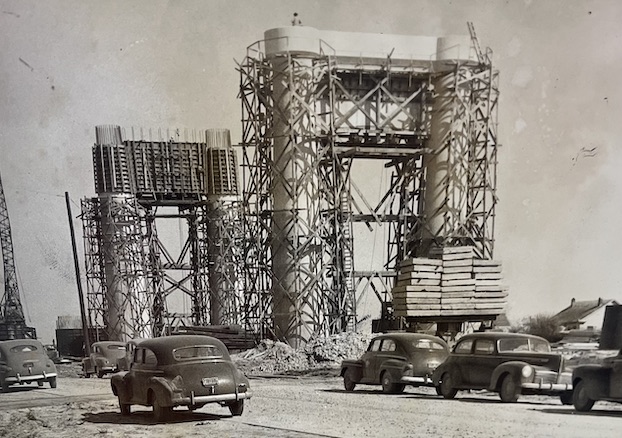Pain at the Pump: Panelists give input on why gas prices have gotten so high
Published 5:27 am Tuesday, August 9, 2022

- Rising fuel costs are affecting consumers as well as business owners. (Metro Creative Services)
The Better Business Bureau is known for handling complaints and notifying the public of scams, old and new. At the Friday, Aug. 5, business-to-business breakfast, the BBB brought experts to the table to talk about “Pain at the Pump.”
Panelists included Nickole Walston, optimization manager, Phillips 66; James “Gary” Gobert, owner, Lake City Trucking; JP LeLeux, director of analytics and special projects, Shop Rite Stores; and Commander Gene Pittman, enforcement commander, Calcasieu Parish Sheriff’s Office.
Gobert built his business from one truck purchased in 1988 with a $1 down payment to a 50-truck, 90-trailer and 50-employee business.
Trending
“I remember filling up for $30 or $40,” he said. “I couldn’t believe it when it cost $100 to fill up a truck. I had to call my dad and tell him. Today, it costs over $1,000 to fill up the same truck,” Gobert said. “Most big trucks average from five to eight miles per gallon, depending on the efficiency of the truck and depending on the load.”
Don’t blame LeLeaux or other convenience store and fuel station owners. The profit margin for gasoline and diesel is one to two percent, and those margins have gone down as prices have gone up.
“We’re good,” said Pittman, enforcement commander at Calcasieu Parish Sheriff’s Office, “thanks to Sheriff Mancuso’s smart fiscal responsibility. Many years ago, you may remember, he passed a tax. If the pain at the pump for us got bad enough, we have rainy day funds sufficient to take care of the needs of the men and women of the department, our fuel needs and take care of the parish.”
He noted that the public may see “running” motors of parked patrol and other law enforcement special units. They’re not wasting fuel. They’re saving time in case they need to suddenly power up new technology. Law enforcement officers who take units home pay a fee to do so and the public benefits because many times officers have been in route to or from home and able to perform their duties.
“The question I’m sure you all want answered is, why is gas so expensive now?” said Walston early in her presentation.
Walston said the causes are many — underinvestment in the energy sector over the past several years, exacerbated by the pandemic, rebounded demand since pandemic lows, and the war in Ukraine has impacted oil and refined product flows around the world.
Trending
“With that in mind, there are three things you need to know about the pricing of transportation fuels,” she said. “At its simplest prices are determined by market dynamics of supply and demand, basic economics. In the U.S., the demand for gasoline and diesel, like I said, has recovered to pre-pandemic levels. While the refining capacity in the U.S. has shrunk by over 1 million barrels a day or roughly 5 percent overall since the beginning of the pandemic. Similarly, crude demand growth has outpaced supply growth in the aftermath of the pandemic.”
She said the Russian invasion of Ukraine is driving almost worldwide sanctions. Others are competing with the U.S. for the same available crude. Spring was a heavy turnaround season as refineries executed maintenance deferred during the pandemic due to staffing and cost limitations. Refineries ran hard during the summer season. But product inventories were really low.
“As demand increased in May and June, you saw the gasoline prices peak,” she said. “So this ensuing supply and demand imbalance has contributed to higher prices at the pump.”
Phillips 66 and other refineries have been running at 89 to 93 percent and are forecast to top the mid-90-percentile mark throughout the summer, which is at or above typical utilization in these months in the past 15 years.
Also contributing to the pain at the pump, according to Walston, is the price of crude.
“According to Energy Information Administration data, crude oil accounts for 50 to 60 percent of the average price of gasoline and diesel. Crude oil prices are determined by market forces of supply and demand. And they’re also sensitive to geopolitical events. So as we discussed previously, Russian invasion of Ukraine and resulting sanctions on Russian oil and products have exacerbated an already complicated geopolitical landscape and a market that witnessed global oil demand recover to pre pandemic levels while supply has definitely lagged. Unfortunately, investment and crude production has been insufficient to meet demand for a while yet and domestic barriers to investment are just now being addressed.”





